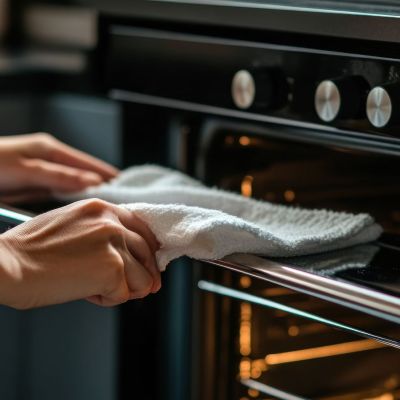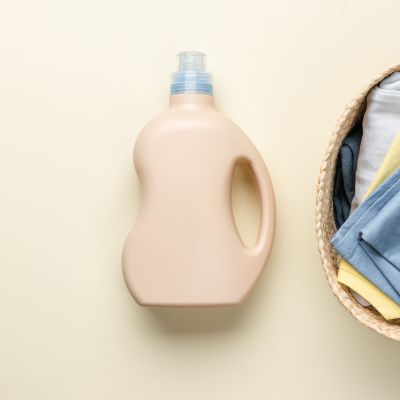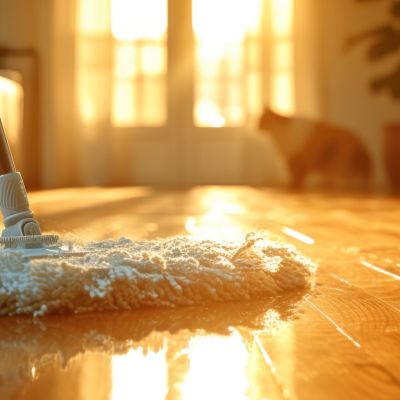How To Get Rid of Dust Mites Step-by-Step
How to Eliminate Dust Mites: A Step-by-Step Guide
Are dust mites causing discomfort in your home? Don’t worry, we’ve got you covered! This guide will walk you through simple and effective methods to get rid of dust mites for good. Whether you prefer natural remedies or direct treatments, we have the tips and tricks to transform your space into a dust-mite-free zone. Say goodbye to sneezing, itching, and wheezing—let’s dive in!
How to Naturally Eliminate Dust Mites
The good news is that you can remove dust mites naturally without hiring professional cleaners. With regular cleaning routines, vacuuming, and a few simple steps, you can tackle dust mites head-on and keep your home clean and comfortable. While getting rid of dust mites is an ongoing effort, consistency will bring great results.
1. Wash Bed Linens and Bedding Regularly
Washing your bed linens, blankets, and covers frequently is key to reducing dust mite populations. By sticking to a weekly washing schedule, you can eliminate allergens and prevent dust mites from multiplying, creating a healthier and more restful sleeping environment.
2. Vacuum and Dust Frequently
To minimize dust mites and allergens, vacuum your home regularly, especially in areas where dust tends to accumulate like carpets, furniture, and bedding. Use allergen-proof covers on your mattress and pillows to prevent dust mites from settling in. Constantly vacuuming surfaces will also help reduce dust mite “hot spots.”
3. Control Moisture and Humidity
Dust mites thrive in warm, humid environments. To combat this, use a dehumidifier to manage moisture levels, open windows for fresh air, and check that your home’s vents are working properly to keep humidity in check.
4. Use Allergen-Proof Covers
Invest in allergen-proof covers for your pillows and mattresses. These protective barriers keep dust mites from making their home in your bedding, helping reduce the risk of allergic reactions. Washing these covers weekly will help maintain their effectiveness in blocking allergens.
5. Freeze or Heat-Treat Infested Items
Using extreme temperatures can help eliminate dust mites from infested items:
- Freezing: Place bedding, blankets, and covers in the freezer for at least 24 hours to kill dust mites.
- Heat Treatment: Wash items in hot water (130°F / 54°C or higher) or dry them on high heat for 20 minutes to eradicate dust mites.
These methods can significantly lower dust mite populations and help ease allergy symptoms.
6. Clean Carpets and Upholstery
To properly clean carpets and upholstery:
- Vacuum thoroughly to remove loose dirt and debris.
- Use a carpet cleaner or steam cleaner for a deep clean.
- Treat stains with an appropriate stain remover.
- Allow the carpets and furniture to dry completely before using them again.
This will help reduce allergens and keep your home fresh.
How to Eliminate Dust Mites in a Mattress
Dust mites love cozy, warm places—and your mattress is one of their favorite spots. By protecting your mattress and following regular cleaning practices, you can prevent dust mites and keep your bed comfortable and clean.
1. Encase Your Mattress and Pillows
Use dust mite-proof covers on your mattress and pillows to create a barrier that prevents dust mites from invading your bedding. These covers will significantly reduce the presence of dust mites in your bed.
2. Wash Bed Linen Frequently
Washing bed linens regularly helps keep dust mites at bay. Use hot water (130°F / 54°C) and a mild, fragrance-free detergent to clean sheets, pillowcases, and blankets. Dry them on high heat to kill any remaining dust mites.
3. Vacuum and Steam Clean Your Mattress
Use a vacuum with a HEPA filter to thoroughly clean your mattress, focusing on seams and crevices. After vacuuming, steam clean the mattress to eliminate dust mites with hot steam.
4. Use Sunlight and Fresh Air
Dust mites thrive in humid, dark environments. Combat this by opening windows for fresh air and letting sunlight in. Sunlight has a natural disinfecting effect that can kill dust mites on surfaces exposed to direct sunlight. Hang your bedding outside to dry—sunlight and airflow will work together to eliminate dust mites.
5. Consider Professional Mattress Cleaning
For a deep clean, you may want to hire a professional mattress cleaning service. They have specialized tools and techniques to thoroughly remove dust mites and allergens, ensuring your mattress is as clean and healthy as possible.
How to Eliminate Dust Mites in Your Home
Dust mites can be a nuisance, but with a regular cleaning routine, you can keep their population in check and maintain a healthier home.
1. Reduce Dust and Clutter
Declutter your space and clean surfaces regularly to prevent dust from accumulating. A tidy home makes it easier to control dust mites.
- Vacuum: Use a vacuum with a HEPA filter on rugs, carpets, and upholstery.
- Dust: Wipe surfaces with a microfiber cloth or electrostatic duster to trap dust instead of spreading it.
2. Use Air Purifiers
Air purifiers can help remove dust mites and other allergens from the air. Place air purifiers in key areas like the bedroom or living room to improve indoor air quality.
3. Wash Soft Furnishings Regularly
Don’t forget to wash soft furnishings such as pillows, cushions, and drapes. Follow these tips for cleaning:
- Vacuum soft furnishings with a HEPA filter at least once a week.
- Wash pillow covers, bed linens, and curtains in hot water every two weeks.
- Use allergen-proof covers on pillows and cushions to keep dust mites from settling in.
4. Stick to a Regular Cleaning Schedule
Create a routine that includes regular vacuuming, dusting, and washing to prevent dust mite buildup. Vacuum carpets and upholstery at least once a week and dust surfaces with a damp cloth to keep dust from spreading.
5. Keep Humidity Low
Dust mites thrive in humid environments. Keep moisture levels down by using a dehumidifier, ensuring proper ventilation, and opening windows whenever possible.
How to Eliminate Dust Mites on Skin
While dust mites don’t bite, they can still cause skin irritation, rashes, or even acne. Follow these steps to minimize their impact on your skin.
1. Take Regular Showers
Regular showers help remove dust mites from your skin and hair, preventing them from spreading to other areas of your home. Showering before bed can also create a cleaner sleeping environment.
2. Use Dust Mite-Proof Bedding
Protect your skin by using dust mite-proof bedding. Follow these steps:
- Use dust mite-proof covers on your mattress and pillows.
- Wash bed linens regularly in hot water.
- Avoid using down-filled bedding, as it attracts dust mites.
3. Avoid Contact with Dust Mite Allergens
Take steps to reduce direct contact with dust mite allergens:
- Wash bedding and stuffed animals regularly in hot water.
- Vacuum carpets and furniture using a HEPA filter.
- Use allergen-proof covers on bedding.
4. Use Hypoallergenic Skin Care Products
Opt for hypoallergenic skin care products, which are designed to be gentle on sensitive skin and help avoid flare-ups triggered by allergens.
5. Seek Medical Advice if Necessary
If you experience persistent symptoms or suspect a dust mite allergy, consult a healthcare professional. They can help diagnose your condition and suggest appropriate treatments to manage your allergies.
Frequently Asked Questions (FAQs)
How do I know if I have dust mites?
Dust mites are invisible to the naked eye, but if you experience allergy symptoms like sneezing, itchy eyes, a stuffy nose, or asthma symptoms, they could be the culprit. If you live in a warm, humid environment, you’re also at a higher risk of having dust mites in your home. Dust mite test kits are also available for a definitive answer.
What kills dust mites instantly?
- Heat: Washing bedding in hot water (130°F / 54°C) or using a steam cleaner on mattresses and furniture can kill dust mites.
- Cold: Freezing items for 24 hours can also eliminate dust mites.
- Dust Mite Sprays: Specialized sprays are available to kill dust mites.
- Diatomaceous Earth: This natural substance can help reduce dust mite populations.
What causes dust mites?
Dust mites are naturally occurring creatures. They feed on dead skin flakes, which we shed daily. High humidity, warm temperatures, and soft surfaces like mattresses, carpets, and furniture create ideal environments for dust mites to thrive.
By controlling moisture, cleaning regularly, and using protective covers, you can keep dust mites at bay and enjoy a cleaner, healthier home.




